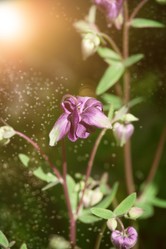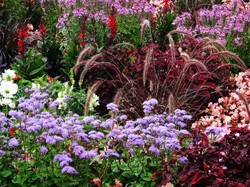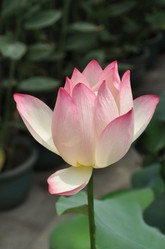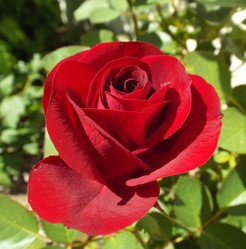What does a herbalist do when she sees that the herbs that she sources from abroad [as she cannot get enough suitable herbs at home] are of variable quality? The only answer is to get her own wood and grow her own herbs, but the process of developing the wood took a few years of hard work and planning.
Who is Anne? She is an expert herbalist, and with her is her partner Kay Foster, with whom she runs a herbal business selling a variety of products for minor ailments and skin care, Holt Wood Herbs. . The author of a scholarly book on herbs that you can see below, she was for some years director of programmes in complementary health sciences at Middlesex University in the Greater London Area and is now an honorary research fellow at Exeter University in the South West of England, where she now resides.
Finding her own woodland was the hard bit in a country where land prices are often high; but woods do become available, and soon Kay spotted one for sale,Holts Wood in North Devon. But it needed attention. The wood was already planted with two and a half acres of commercially grown sitka spruce, which was ready for harvest. I do not know why the owner was selling, but maybe because in commercial forestry there is often a long lapse between planting and the profit that comes with reaping, and he did not fancy another long wait, he wanted to cash in on his asset. Anne was very keen to purchase it from him. At last the two friends had their woodland.
The sitka spruce had to be felled, which was why it had been planted anyway, and this felling went a little way to providing the investment for the necessary replanting, which involved a complete re-design of the woodland. The two women also managed to obtain a grant that went along with a management plan for the wood, because the grant came from Britain's Forestry Commission, our national body for managing the nation's woodlands, who are keen to replace the twentieth century commercial conifer monocultures with mixed woodland. These people are helpful, but they have strict requirements that are the conditions for their grants. Native trees where possible must be planted as a condition of the grant, though this is not a hard and fast rule, for sometimes you need non-native species or varieties, some of which the women needed, such as American Witch Hazeland Prickly Ash, the first of which is excellent for relieving swelling and bruises.
But in the meantime when the new wood was growing the women had to continue sourcing their herbs from other sources.










 TheThousand Year Gardenon 11/26/2025
TheThousand Year Gardenon 11/26/2025
 Women of the Gospelson 10/11/2025
Women of the Gospelson 10/11/2025
 Religious Gardenson 08/25/2025
Religious Gardenson 08/25/2025
 Doctor of the Church: John Henry Newmanon 08/03/2025
Doctor of the Church: John Henry Newmanon 08/03/2025




Comments
No, there is none.
Fungal diseases of plants have no known cures. Ash die back is a fungal disease.
Thank you for your comment below, in answer to my previous observation and question.
Your answer three comment boxes down intrigues me.
Is there an established successor among "new options for herbal medications" to the dieback-threatened prickly ash?
I have not heard of any threats to witch hazel.
Thank you for your comment below, in answer to my previous observation and question.
Your answer three comment boxes down describes prickly ash and witch hazel as traditional healing herbs.
Does anything threaten witch hazel or is witch-hazel herbal-medication use not threatened by anything threatening its staying-power?
Yes, herbalists have sought new options for herbal medications.
Thank you for your comment below, on Feb. 29, 2020, in answer to my previous observation and question.
Witch hazel is a popular Unitedstatesian healing herb even as prickly ash is a bit less priority.
Might British Isles-ers minimize prickly-ash dosages or move to another herbal during this European ash dieback massacre?
Derdriu, all traditional British healing herbs are still available. We use witch hazel,but while specimens of prickly ash are grown in Britain, there are too few of them for significant herbal use, and anyway ash die back is devastating ash tree in Britain.
frankbeswick, Thank you for the practicalities and products, particularly the household medicine publication.
Nurse trees are such companionable practices. Oak trees can be such effective nurses except in chestnut-oak forests where they host the chestnut blight. Ink disease (Phytophthora cinnamomi) killed all of President Jefferson's lowland-growing chestnut trees in his chestnut-oak woods and then, in the following century, blight (Cryphonectria parasitica) killed all of President Roosevelt's highland-growing chestnut trees in his chestnut-oak woods. President Roosevelt said that three major, tragic disappointments in his life were the death of his first wife, the failure of his Bull Moose Party and the loss of his chestnut trees.
Is it that traditional British Isle treatments for bruises and swelling relied upon plants less effective than American prickly ash and witch hazel or that those sources are endangered or no longer accessible or in existence?
I have never before heard of tree nurses to other trees. Interesting.